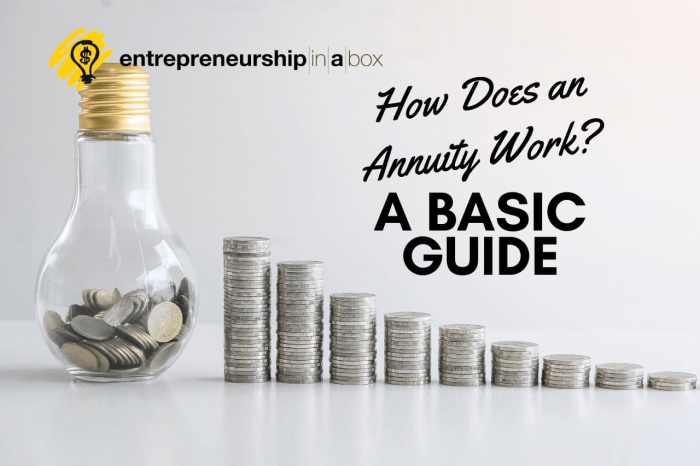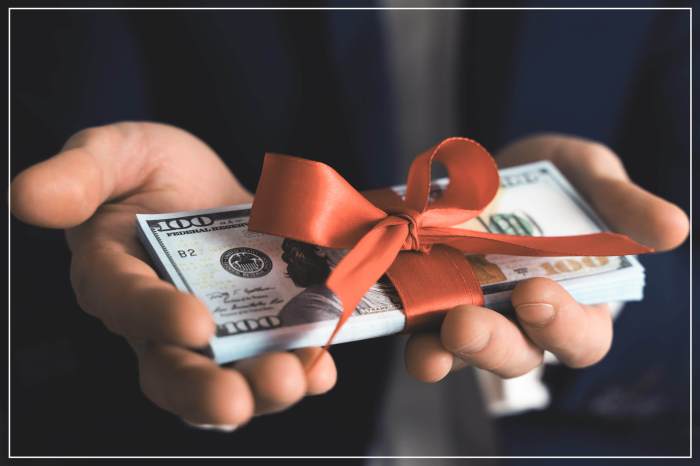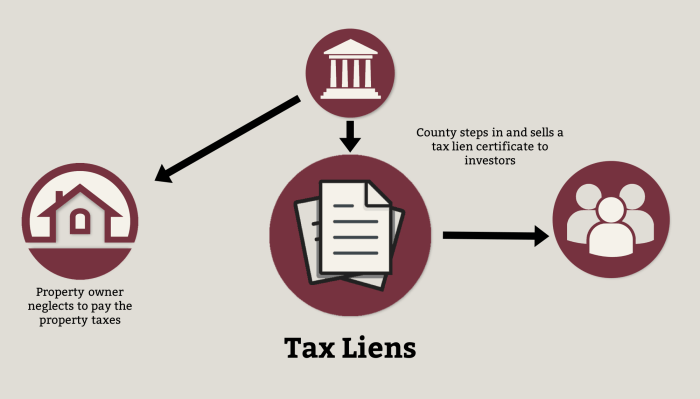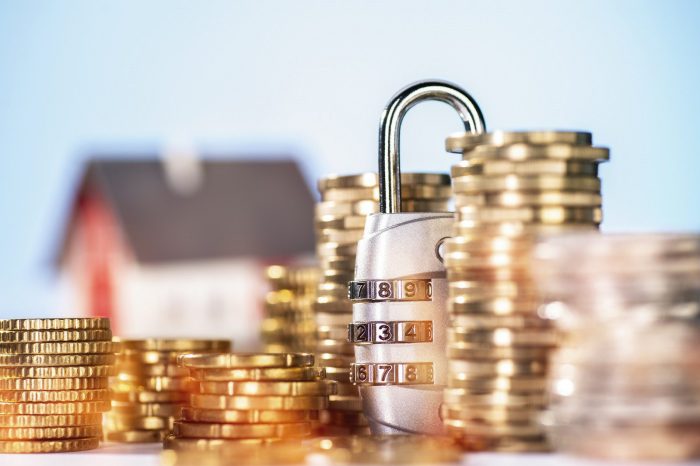Gold vs Silver Investment A Guide to Precious Metals
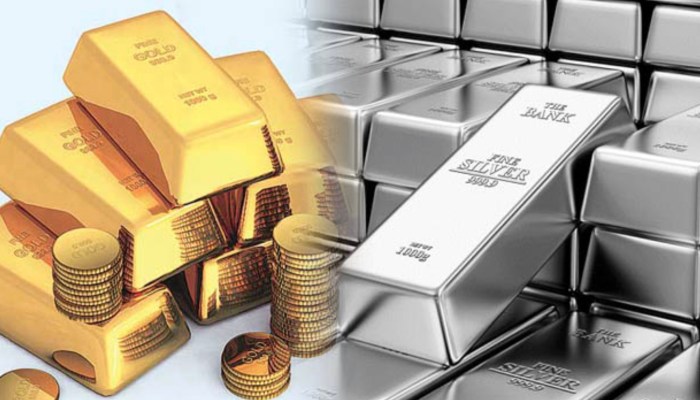
Gold vs silver investment, a timeless debate that has captivated investors for centuries. These precious metals have long held a special place in human history, serving as both currency and a store of value. From ancient civilizations to modern markets, gold and silver have weathered economic storms and political upheavals, proving their enduring appeal. But which metal reigns supreme as an investment? Understanding the historical context, physical properties, and investment considerations of each metal is crucial to making informed decisions.
This comprehensive guide delves into the intricacies of gold and silver investment, exploring their historical significance, physical properties, and investment strategies. We will analyze the factors that influence their prices, discuss the risks and rewards of various investment approaches, and consider the environmental and social implications of their mining and use.
Historical Perspective
Gold and silver have been used as currency and stores of value for millennia, their roles shaping economies and influencing global events. Understanding their historical journey provides valuable insights into the current dynamics of these precious metals.
The Evolution of the Gold-Silver Price Ratio
The relationship between gold and silver prices, often expressed as the gold-silver ratio, has fluctuated significantly throughout history. This ratio reflects the relative values of the two metals in the market, influenced by factors like supply and demand, government policies, and economic conditions.
- Ancient Times: In ancient civilizations, gold was generally considered more valuable than silver, with ratios ranging from 10:1 to 15:1. This was primarily due to gold’s scarcity and its association with royalty and divinity.
- Middle Ages: During the Middle Ages, the gold-silver ratio remained relatively stable, fluctuating between 10:1 and 12:1. This period saw the emergence of coinage systems based on both metals, contributing to their widespread use as currency.
- Modern Era: From the 16th to the 19th centuries, the discovery of new silver deposits in the Americas led to a decline in the gold-silver ratio. This resulted in a shift towards a more bimetallic system, where both metals played significant roles in global economies.
- 20th Century: The 20th century witnessed a dramatic shift towards a gold standard, where gold became the primary reserve asset for many countries. This resulted in a surge in the gold-silver ratio, reaching a peak of around 80:1 in the 1980s. The abandonment of the gold standard in the 1970s led to a decline in the ratio, although it has continued to fluctuate significantly since then.
Historical Events Influencing Demand
Historical events have played a crucial role in shaping the demand for gold and silver. Wars, economic crises, and technological advancements have all contributed to fluctuations in prices and the relative value of these metals.
- Wars: Throughout history, wars have often led to increased demand for gold and silver. Governments have resorted to printing money to finance military expenditures, resulting in inflation and a flight to safe haven assets like gold and silver.
- Economic Crises: During economic downturns, investors often seek safe haven assets to protect their wealth from market volatility. Gold and silver, with their perceived stability and historical track record, have often served as havens during periods of economic uncertainty.
- Technological Advancements: Technological advancements, such as the discovery of new mining techniques or the development of new industrial applications for silver, can significantly impact demand and prices. For example, the rise of the digital age has led to increased demand for silver in electronics, driving its price higher.
“The price of gold has always been volatile, but its long-term trend has been upward.” – Peter Schiff
Physical Properties and Uses
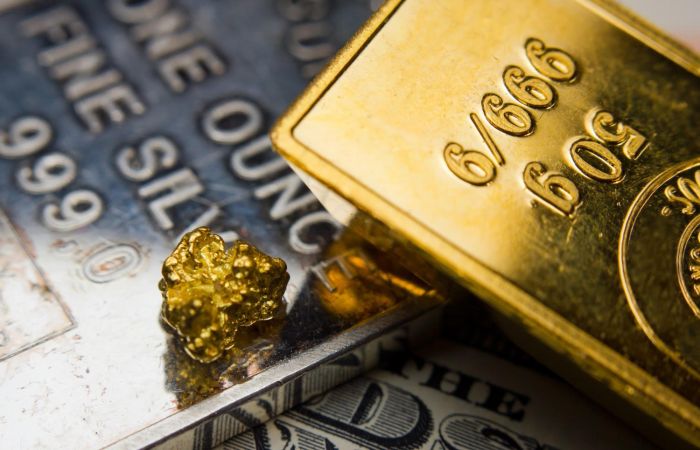
Gold and silver, both precious metals, have distinct physical properties and industrial applications that influence their supply, demand, and investment appeal. Understanding these differences is crucial for investors seeking to navigate the complexities of the precious metals market.
Physical Properties
The physical properties of gold and silver significantly impact their uses and investment value.
- Gold is a soft, dense, and highly malleable metal with excellent electrical and thermal conductivity. It is chemically inert and resistant to corrosion, making it highly durable and suitable for long-term storage. Gold’s resistance to tarnishing and oxidation allows it to retain its luster and value over time.
- Silver is also a soft, malleable, and ductile metal with high electrical and thermal conductivity. While it is less dense than gold, silver is a more reactive metal, prone to tarnishing and oxidation in the presence of sulfur and other elements. However, its excellent reflectivity makes it ideal for various applications, including mirrors and solar panels.
Industrial Uses
Both gold and silver have diverse industrial applications, impacting their supply and demand dynamics.
Gold
Gold’s unique properties make it a valuable material in various industries:
- Electronics: Gold’s excellent conductivity and resistance to corrosion make it essential in electronics, particularly in connectors, microchips, and printed circuit boards. The increasing demand for electronic devices, particularly smartphones and computers, has fueled the demand for gold in this sector.
- Jewelry: Gold’s beauty, durability, and malleability have made it a prized material for jewelry for centuries. While the demand for gold jewelry has fluctuated over time, it remains a significant driver of gold consumption.
- Dentistry: Gold’s biocompatibility and resistance to corrosion make it ideal for dental fillings, crowns, and bridges. The use of gold in dentistry has declined in recent years due to the development of alternative materials, but it remains a significant application.
- Medical: Gold is used in medical applications, including treatment for rheumatoid arthritis and certain types of cancer. While the medical use of gold is relatively small compared to other applications, it contributes to overall demand.
Silver
Silver’s unique properties make it a valuable material in various industries:
- Photography: Silver’s sensitivity to light has made it the primary component in photographic film and paper for over a century. While the rise of digital photography has significantly reduced the demand for silver in this sector, it remains a significant consumer of silver.
- Solar Panels: Silver’s high reflectivity and electrical conductivity make it ideal for use in solar panels, where it acts as an electrical conductor and enhances the efficiency of energy absorption. The increasing demand for renewable energy sources has driven the demand for silver in solar panel production.
- Electronics: Silver is also used in electronics, particularly in conductive inks and solders. The demand for silver in electronics is expected to grow as the demand for electronic devices continues to rise.
- Medical: Silver is used in medical applications, including wound dressings, antimicrobial agents, and surgical instruments. Silver’s antimicrobial properties make it effective in preventing infection and promoting healing.
Investment Considerations
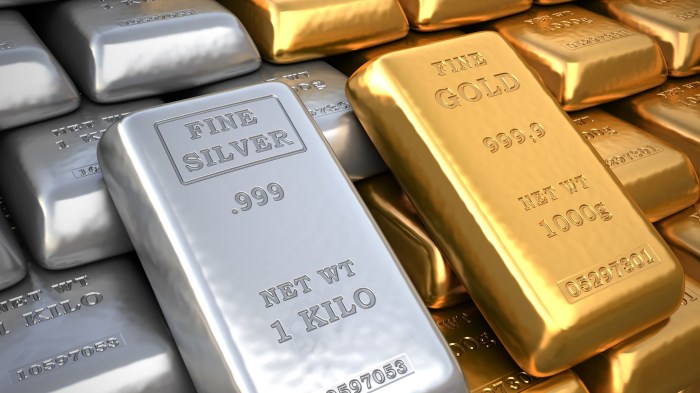
Gold and silver have long been considered safe haven assets, meaning they tend to hold their value or even increase in price during times of economic uncertainty. This is because they are perceived as a store of value and a hedge against inflation. When investors are worried about the economy, they often turn to gold and silver as a way to preserve their wealth.
Safe Haven Assets
During times of economic turmoil, such as recessions, wars, or political instability, investors often seek out assets that are considered safe havens. Gold and silver have historically performed well during such periods, as their prices tend to rise when other asset classes, such as stocks and bonds, are falling. This is because gold and silver are seen as a safe store of value that can help to protect investors’ wealth from economic shocks.
Volatility of Gold and Silver Prices
Gold and silver prices can be volatile, meaning they can fluctuate significantly in the short term. This volatility is influenced by a variety of factors, including global economic conditions, investor sentiment, and supply and demand dynamics.
Gold is generally considered to be less volatile than silver. This is because gold has a longer history as a monetary metal and is more widely traded, which helps to stabilize its price. Silver, on the other hand, is more susceptible to price fluctuations due to its greater industrial use, which makes it more sensitive to changes in economic activity.
Factors Influencing Prices
Several factors influence the price of gold and silver:
- Economic Conditions: When economic growth is strong and inflation is low, gold and silver prices tend to fall as investors are more likely to invest in other asset classes. Conversely, when economic growth is weak or inflation is high, gold and silver prices tend to rise as investors seek safe haven assets.
- Interest Rates: Higher interest rates make it more expensive to hold gold and silver, as they do not generate any income. This can lead to lower demand for these metals and a decrease in their prices.
- Currency Values: The value of gold and silver is often inversely correlated with the value of the US dollar. When the dollar weakens, gold and silver prices tend to rise as investors seek to protect their wealth from currency depreciation.
- Supply and Demand: Like any commodity, the price of gold and silver is influenced by the forces of supply and demand. When demand exceeds supply, prices tend to rise. Conversely, when supply exceeds demand, prices tend to fall.
- Investor Sentiment: Investor sentiment can also have a significant impact on gold and silver prices. When investors are optimistic about the economy, they are less likely to invest in gold and silver, which can lead to lower prices. Conversely, when investors are pessimistic about the economy, they are more likely to invest in gold and silver, which can lead to higher prices.
Investment Strategies
Investing in gold and silver can be achieved through various approaches, each with its own set of risks and rewards. Understanding these strategies is crucial for making informed investment decisions.
Bullion
Bullion refers to gold and silver in the form of bars or ingots, typically of high purity. It is a popular choice for investors seeking physical ownership of these precious metals.
Advantages of Investing in Bullion
- Tangible Asset: Bullion provides physical ownership of a valuable asset, offering a sense of security and control.
- Hedge Against Inflation: Gold and silver have historically served as a hedge against inflation, as their value tends to rise during periods of economic uncertainty.
- Portfolio Diversification: Adding bullion to a portfolio can diversify investments and reduce overall risk.
Disadvantages of Investing in Bullion
- Storage Costs: Storing bullion safely can incur significant costs, such as insurance and secure storage facilities.
- Liquidity Risk: Selling bullion can be challenging, especially during market downturns, as finding buyers at the desired price may be difficult.
- Market Volatility: Bullion prices are susceptible to market fluctuations, potentially leading to losses.
Coins
Gold and silver coins are another popular way to invest in these precious metals. They are often minted by governments or private mints, and their value is typically based on their precious metal content and numismatic value.
Advantages of Investing in Coins
- Collectibility: Certain coins, especially those with historical significance or limited mintages, can hold numismatic value, potentially exceeding their bullion value.
- Easier to Store and Transport: Coins are generally smaller and more convenient to store and transport compared to bullion bars.
- Wider Availability: Coins are more widely available than bullion, making it easier to buy and sell.
Disadvantages of Investing in Coins
- Premium Over Spot Price: Coins often carry a premium over the spot price of gold or silver, which can affect returns.
- Authentication Challenges: Ensuring the authenticity of coins can be challenging, especially for older or rare coins.
- Storage and Security: Coins require secure storage to prevent theft or damage, which can incur costs.
Exchange-Traded Funds (ETFs)
Gold and silver ETFs are investment funds that track the price of these metals. They allow investors to gain exposure to precious metals without physically owning them.
Advantages of Investing in ETFs
- Diversification: ETFs typically hold a basket of gold or silver assets, providing diversification and reducing risk.
- Liquidity: ETFs are traded on stock exchanges, offering high liquidity and ease of buying and selling.
- Low Costs: ETFs generally have lower expense ratios compared to mutual funds.
Disadvantages of Investing in ETFs
- Counterparty Risk: ETFs are subject to counterparty risk, meaning investors could lose money if the ETF provider defaults.
- Market Volatility: ETF prices are subject to market fluctuations, potentially leading to losses.
- Tracking Error: ETFs may not perfectly track the underlying price of gold or silver, leading to discrepancies in returns.
Mining Stocks
Investing in mining stocks allows investors to participate in the gold and silver mining industry. The value of these stocks is tied to the price of gold and silver, as well as the performance of the mining companies.
Advantages of Investing in Mining Stocks
- Leverage: Mining stocks can offer leverage to gold and silver prices, potentially amplifying returns.
- Growth Potential: Some mining companies have significant growth potential, especially those with new discoveries or efficient operations.
- Dividend Income: Some mining companies pay dividends to shareholders, providing additional income.
Disadvantages of Investing in Mining Stocks
- Higher Risk: Mining stocks are generally considered more volatile and risky than other investment options.
- Operational Challenges: Mining companies face various operational challenges, such as fluctuating commodity prices, labor costs, and environmental regulations.
- Limited Liquidity: Some mining stocks may have limited liquidity, making it difficult to buy or sell shares quickly.
Hypothetical Portfolio Allocation
A hypothetical portfolio could allocate a portion to gold and silver, based on individual risk tolerance and investment goals. For example, a conservative investor might allocate 5% to 10% of their portfolio to gold and silver, while a more aggressive investor might allocate 15% to 20%.
Important Note: This is just a hypothetical example, and investment decisions should be made based on individual circumstances and financial goals.
Economic and Political Factors

Economic and political factors play a significant role in influencing the prices of gold and silver. These factors can create both opportunities and risks for investors seeking to capitalize on the precious metals market.
Impact of Inflation and Interest Rates
Inflation and interest rates have a complex relationship with gold and silver prices.
- Inflation: When inflation rises, the purchasing power of fiat currencies declines. As a result, investors often turn to gold and silver as a hedge against inflation, as their value tends to rise in such environments.
- Interest Rates: Conversely, rising interest rates can put downward pressure on gold and silver prices. Higher interest rates make holding non-yielding assets, such as precious metals, less attractive, as investors can earn higher returns on interest-bearing instruments.
Government Policies and Central Bank Actions
Government policies and central bank actions can significantly impact the demand for gold and silver.
- Monetary Policy: Central banks often use monetary policy tools, such as interest rate adjustments and quantitative easing, to manage inflation and economic growth. These actions can influence the value of gold and silver. For instance, during periods of quantitative easing, when central banks inject liquidity into the financial system, the demand for gold and silver can increase as investors seek safe haven assets.
- Fiscal Policy: Government fiscal policies, such as spending and taxation, can also impact the demand for precious metals. For example, increased government spending can lead to higher inflation, which can benefit gold and silver prices.
Geopolitical Events
Geopolitical events, such as wars, political instability, and global economic crises, can significantly impact the demand for gold and silver.
- Safe Haven Demand: During times of uncertainty, investors often seek safe haven assets, such as gold and silver, as a way to preserve wealth. This can lead to a surge in demand for precious metals, driving up their prices.
- Supply Disruptions: Geopolitical events can also disrupt the supply of gold and silver, further contributing to price increases. For example, political instability in a major gold-producing country could lead to supply disruptions, affecting global markets.
Environmental and Social Considerations
Investing in gold and silver, like any other commodity, carries environmental and social implications. Understanding these aspects is crucial for making informed investment decisions. This section delves into the environmental impact of gold and silver mining, explores ethical considerations surrounding their sourcing, and identifies sustainable practices within the precious metals industry.
Environmental Impact of Mining
Mining gold and silver has significant environmental consequences. These include:
* Habitat destruction: Mining operations often involve clearing large areas of land, disrupting ecosystems and displacing wildlife.
* Water pollution: Mining activities can release heavy metals, cyanide, and other toxic chemicals into water sources, contaminating rivers, lakes, and groundwater.
* Air pollution: Dust and particulate matter released during mining can contribute to air pollution, affecting human health and the environment.
* Greenhouse gas emissions: Mining operations, especially those involving energy-intensive processes, contribute to greenhouse gas emissions, exacerbating climate change.
* Land degradation: Mining can leave behind scars on the landscape, impacting soil fertility and biodiversity.
Ethical Considerations in Sourcing, Gold vs silver investment
The ethical sourcing of gold and silver is a complex issue. Factors to consider include:
* Human rights: Mining operations can be linked to human rights abuses, including forced labor, child labor, and land grabbing.
* Conflict minerals: Gold and silver may originate from conflict zones, where their trade fuels violence and instability.
* Community impact: Mining activities can displace local communities, disrupt their livelihoods, and lead to social conflicts.
Sustainable Practices in the Precious Metals Industry
While gold and silver mining can have negative impacts, there are efforts to promote sustainable practices:
* Responsible sourcing: Initiatives like the Responsible Jewellery Council (RJC) and the London Bullion Market Association (LBMA) promote ethical sourcing and responsible practices in the precious metals industry.
* Environmental remediation: Some mining companies are investing in environmental remediation projects to mitigate the impact of past mining activities.
* Technology advancements: Innovations in mining technology, such as improved extraction techniques and waste management systems, can reduce the environmental footprint of mining operations.
* Recycling: Recycling gold and silver from electronic waste and other sources can reduce the need for new mining.
The choice between gold and silver investment ultimately depends on individual financial goals, risk tolerance, and market outlook. While gold has historically been seen as a safe haven asset, silver’s industrial applications and potential for higher returns may appeal to some investors. Regardless of your preference, understanding the fundamentals of each metal is crucial to making informed investment decisions. By carefully considering the historical trends, physical properties, and investment considerations of both gold and silver, you can navigate the world of precious metals with confidence.
General Inquiries: Gold Vs Silver Investment
What are the potential risks associated with investing in gold and silver?
Investing in gold and silver, like any other asset class, carries inherent risks. Price volatility is a significant concern, as the value of these metals can fluctuate significantly in response to economic and geopolitical events. Additionally, storage costs and security measures need to be considered, especially for physical bullion. Furthermore, the supply and demand dynamics of the precious metals market can influence their prices, and geopolitical events can create uncertainty.
What are the tax implications of investing in gold and silver?
The tax implications of investing in gold and silver vary depending on your location and the specific investment method. For example, gains from selling physical gold or silver are typically taxed as capital gains, while investments in gold and silver ETFs may be subject to different tax rules. It’s essential to consult with a tax professional to understand the tax implications of your specific investment strategy.
What is the best way to store physical gold and silver?
Storing physical gold and silver securely is paramount. Safe deposit boxes at banks or specialized storage facilities are commonly used. Home storage is an option, but it requires robust security measures to prevent theft or damage. Consider factors like insurance, accessibility, and the cost of storage when choosing a method.
Deciding between gold and silver investments can be a tough call, but it’s worth considering the potential for long-term appreciation. If you’re looking for a more tangible asset, perhaps exploring the market for investment properties in Maryland could be an interesting alternative. Of course, the choice ultimately comes down to your individual risk tolerance and financial goals.
The age-old debate of gold vs silver investment often hinges on individual risk tolerance and market outlook. But when considering an investment property, the decision can become more complex. If you’re planning to renovate a property before renting or selling, you might need a renovation loan for investment property , which could affect your overall investment strategy.
Ultimately, the choice between gold and silver remains a personal one, and it’s essential to weigh the potential returns against the associated risks.
Deciding between gold and silver investments often comes down to personal preference and market outlook. While some favor the traditional allure of gold, others see value in silver’s potential for industrial applications. However, if you’re seeking a more tangible investment with the potential for consistent returns, consider exploring the market for investment property in Houston, TX.
Real estate offers a diverse range of opportunities, from single-family homes to multi-unit properties, allowing investors to build a portfolio that aligns with their financial goals. Ultimately, the best investment choice depends on your individual risk tolerance, financial situation, and long-term objectives.
